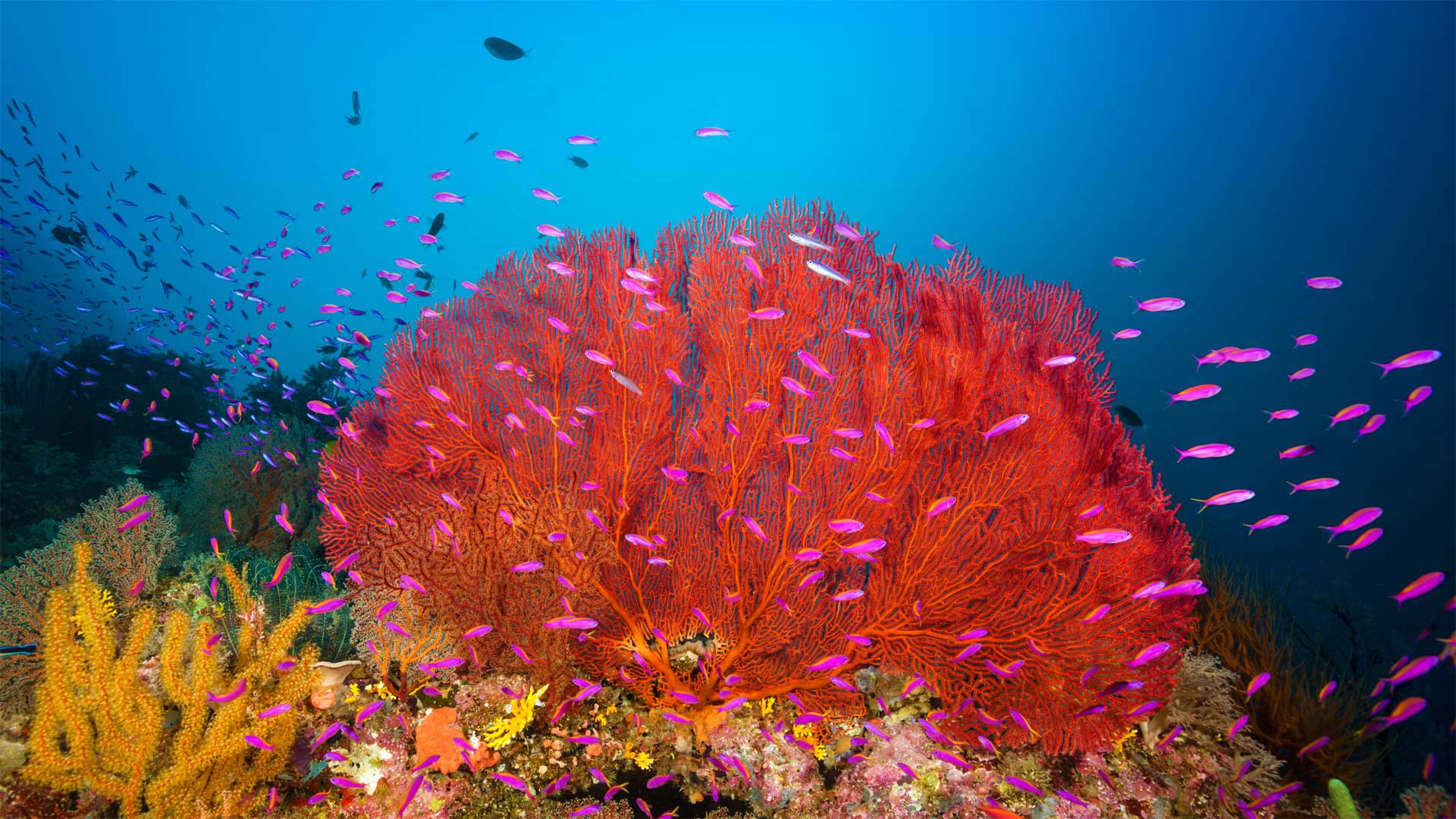标签 所罗门群岛 下的文章
马罗沃泻湖中的珊瑚礁,所罗门群岛 Coral reef in Marovo Lagoon in the Solomon Islands (© WaterFrame/Alamy)

马罗沃泻湖中的珊瑚礁,所罗门群岛 Coral reef in Marovo Lagoon in the Solomon Islands (© WaterFrame/Alamy)
水下的奇妙景观 The beauty that lies below
World Reef Day
The Marovo Lagoon in the Solomon Islands is the largest saltwater lagoon in the world. Protected by a double barrier reef, it's home to unique marine life and coral, making it a bucket-list destination for divers. The beauty and diversity of life contained within its pristine, 270 square miles are the perfect inspiration for World Reef Day, observed every year on June 1 to bring awareness to this vital but largely unseen part of our natural world. Reef Day also kicks off World Oceans Month, a time to celebrate and learn more about these vital ecosystems.
Although coral reefs occupy less than 0.1% of the planet's oceans, they support up to 25% of the world's marine species. They have rightfully earned their nickname, 'Rainforests of the Sea.' Coral is not a plant, but part animal and part mineral, a marine invertebrate that secretes calcium carbonate to form a hard skeleton. They grow in colonies, usually in warm, shallow waters, and form vast colonies that we see as reefs, providing the basic platform for marine life to flourish around them. They even provide benefits to land, protecting shorelines from the forces of the ocean.
Unfortunately, coral reefs are under immense environmental pressure due to pollution, overfishing, and particularly from changing ocean temperatures. A warming ocean and acidification due to increased carbon dioxide have resulted in coral bleaching—when under stress, corals lose their color. The yellow whip and red gorgonian you see here are what healthy corals look like, but vibrant, hearty corals are swiftly becoming the exception rather than the rule. Recently, even the previously robust and thriving Marovo Lagoon began showing signs of bleaching, a sobering reminder that the beauty we see here is fragile and becoming more precious.
世界珊瑚礁日
所罗门群岛的马罗沃泻湖是世界上最大的咸水泻湖。受双堡礁保护,这里是独特海洋生物和珊瑚的家园,是潜水员的首选目的地。每年6月1日是世界珊瑚礁日,每年的6月1日是世界珊瑚礁日的纪念日,旨在让人们认识到这一自然世界中重要但基本上看不见的部分,其270平方英里的原貌中蕴含着美丽而多样的生命。珊瑚礁日也是世界海洋月的开始,是庆祝和了解这些重要生态系统的时候。
虽然珊瑚礁只占地球海洋的不到0.1%,但它们支持着世界上多达25%的海洋物种。他们理所当然地赢得了“海洋雨林”的绰号珊瑚不是植物,但部分是动物,部分是矿物,是一种海洋无脊椎动物,分泌碳酸钙形成坚硬的骨架。它们通常生长在温暖的浅水区,形成巨大的珊瑚礁群,为海洋生物在其周围繁衍生息提供了基本平台。它们甚至为陆地带来好处,保护海岸线不受海洋力量的影响。
不幸的是,由于污染、过度捕捞,尤其是海洋温度的变化,珊瑚礁面临着巨大的环境压力。海洋变暖和二氧化碳增加导致的酸化导致珊瑚白化。在压力下,珊瑚会失去颜色。你在这里看到的黄色鞭子和红色gorgonian珊瑚是健康的珊瑚的样子,但充满活力、饱满的珊瑚很快就会成为例外,而不是常规。最近,就连之前繁荣的马洛沃环礁湖也开始出现白化迹象,这提醒我们,我们在这里看到的美丽是脆弱的,越来越珍贵。